Moving is a huge hassle. There’s so much to do, and it seems like there’s never enough time to get it all done. One of the most daunting tasks is packing up your kitchen appliances. How do you pack a refrigerator? A dishwasher? An oven? It can be tricky! This article will walk you through the process of packing your kitchen appliances for a move. It will give you tips on how to pack each appliance safely and securely, and it will also provide a printable checklist so that you can make sure that nothing gets left behind!
Why Do You Need to Pack Kitchen Appliances?
Additionally, packing kitchen appliances helps reduce clutter in your vehicle during transit and may even provide some extra storage space for other items. Lastly, proper packing of these items can also help prevent them from becoming damaged due to moisture, dust, or temperature changes during transportation. With all these benefits, it’s easy to see why properly packing kitchen appliances is so important!
What Supplies Do You Need to Pack Kitchen Appliances?
When packing for a kitchen move, it pays to be prepared. Below is a list of essential items you should have when you start packing up your kitchen appliances:
- Packing boxes and materials: Make sure to have plenty of packing materials like bubble wrap, tape, wrapping paper, and newspaper available. Don’t forget sturdy cardboard boxes in multiple sizes that can accommodate any appliance and all its parts;
- Labels and markers: It’s important to label each box with the item name and room destination so that unpacking goes smoothly at the other end. You may also want to mark fragile items with an extra caution sticker or writing on the box itself;
- Cleaning supplies: When you’re preparing to move, it’s a great opportunity for deep cleaning before you go. Have cleaners and sponges on hand to wipe down appliances as well as shelves and drawers;
- Utility knife: You may need to use a utility knife to cut away any packing material that is stuck or hindering the removal of an appliance;
- Spare parts: If possible, make sure the cords, hoses, and other replaceable parts are all included in the box or bag with their respective appliance. This will save time when unpacking and setting up at your new home;
- Furniture protection pads: To protect floors and furniture from scratches during transit have several moving blankets or furniture pads on hand;
- Appliance dolly: For larger kitchen appliances, make sure you have a sturdy appliance dolly or two to help move them safely;
- Plastic wrap: Place the plastic wrap around any electrical cords and connections to protect from dust and dirt on the drive over;

By having all these items at your disposal, you can ensure that your kitchen appliances remain in good working condition throughout their packing and transport. So, take the time to prepare beforehand for a more successful move [1].
Steps to Packing Up Small Appliances
Clean and Disassemble Each Appliance
Before you begin packing up small appliances, it’s important to make sure they are clean and disassembled as much as possible. Take some time to dust off any surface dirt, remove parts like knobs or removable shelves, and take apart the appliance if you can. This will help prevent any dirt from transferring into your new home, as well as make it easier when unpacking the items later on.
Pack Each Appliance Separately
Once each appliance is disassembled and cleaned, wrap each piece in paper or bubble wrap for extra protection. Gather all of the pieces together for each appliance and place them in a box labeled with its name so that everything is easy to find when it comes time to unpack. This will also save you a lot of time when packing up your home – instead of worrying about finding the right labels for each item, you’ll know exactly what is in each box just by looking at the label.
Choose an Appropriate Box
The size of the box you choose for your small appliance will depend on the type and size of the appliance you are packing. For larger items like blenders, toasters, or mixers, it is wise to choose a box that can accommodate the item without having to be too crammed in. Smaller items like electric toothbrushes or electric shavers can fit in boxes specifically made for those items. Make sure not to overfill any of your boxes with appliances – leave plenty of room for padding around each piece.
Label Each Box
Once everything is packed up and ready to go, make sure to label each box clearly with its contents before placing it into storage or loading it onto a moving truck. This step is especially important if you have several boxes of small appliances, as it will make unpacking much easier when you arrive at your new home.
Wrap the Appliance in Bubble Wrap
If you’re packing up a particularly delicate item or one with lots of small parts, it can be helpful to wrap it up in bubble wrap before placing it into the box. This extra layer of protection will help prevent any damage during transport and can make all the difference when unpacking your items at your new home.
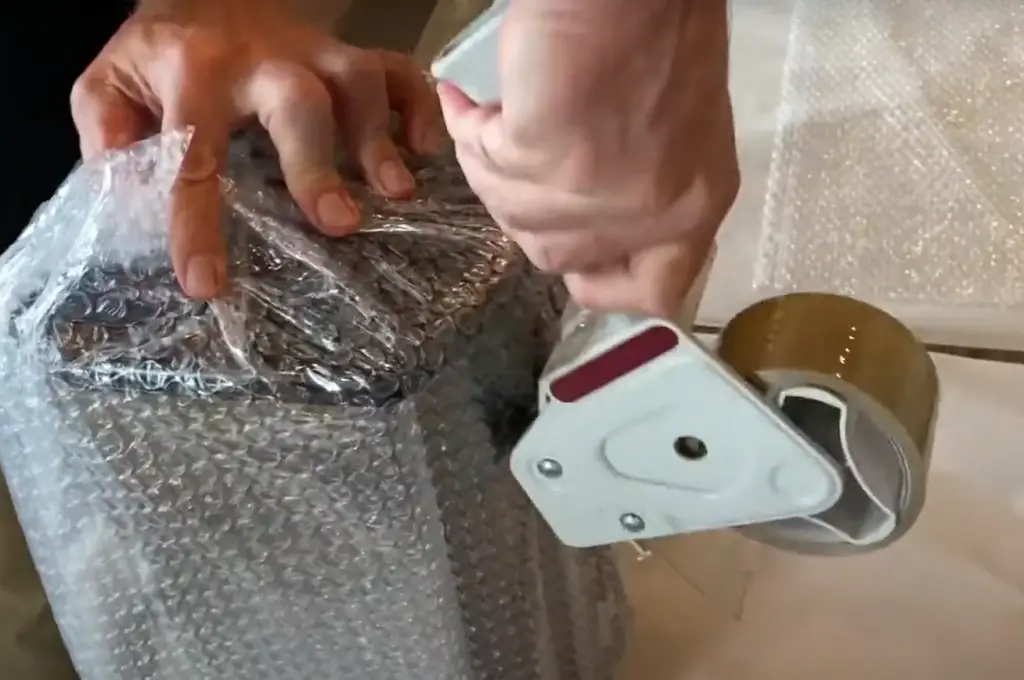
Place the Appliance in the Box
Once the appliance is wrapped up and labeled, place it into the box you have chosen. Make sure to leave enough room at the top of the box for extra padding – either crumpled newspaper or packing peanuts work great. Once you’ve placed the appliance in the box, fill any gaps with some extra padding. This will both help keep the item secure during transport and cushion it from any bumps or drops.
Secure and Stack the Boxes
Once all of your small appliances are packed into boxes, it’s important to make sure they are secured and stacked properly. Use bubble wrap or packing peanuts (or even newspaper) between layers to ensure that nothing shifts during transportation. If possible, stack heavier items on the bottom and lighter items on top to prevent any damage from occurring as well as ensure everything stays in place. And if you have extra room in some boxes, consider using packing paper to fill in any gaps [2].
Tips on Packing Up Large Appliances for Moving
Here are some tips for packing up large appliances for moving:
- Unplug and Drain: Before packing any large appliance for moving, unplug the power cord and drain any liquids in the appliance such as water from a washing machine or ice cubes from a refrigerator;
- Remove Parts: If possible, remove all detachable parts of the appliance that you can pack separately such as shelves, trays, drawers, baskets, etc. Wrap each component in newspaper or bubble wrap to ensure they are well protected during transit;
- Clean & Cover: Clean your appliance before it is placed onto the truck; this will help prevent dirt buildup while in transit and make unpacking easier on arrival at the new location. Once clean, cover your appliances with blankets or pads to prevent scratches and other damage;
- Secure: Make sure that all doors are locked shut, sealed with packing tape, or otherwise secured to prevent them from accidentally opening in transit. Appliances should also be strapped down securely within the truck to prevent shifting and possible damage during movement;
- Label: Clearly label each appliance when packing so you will know which one is which once you arrive at your destination. This will help reduce confusion when unpacking and setting up at the new location;
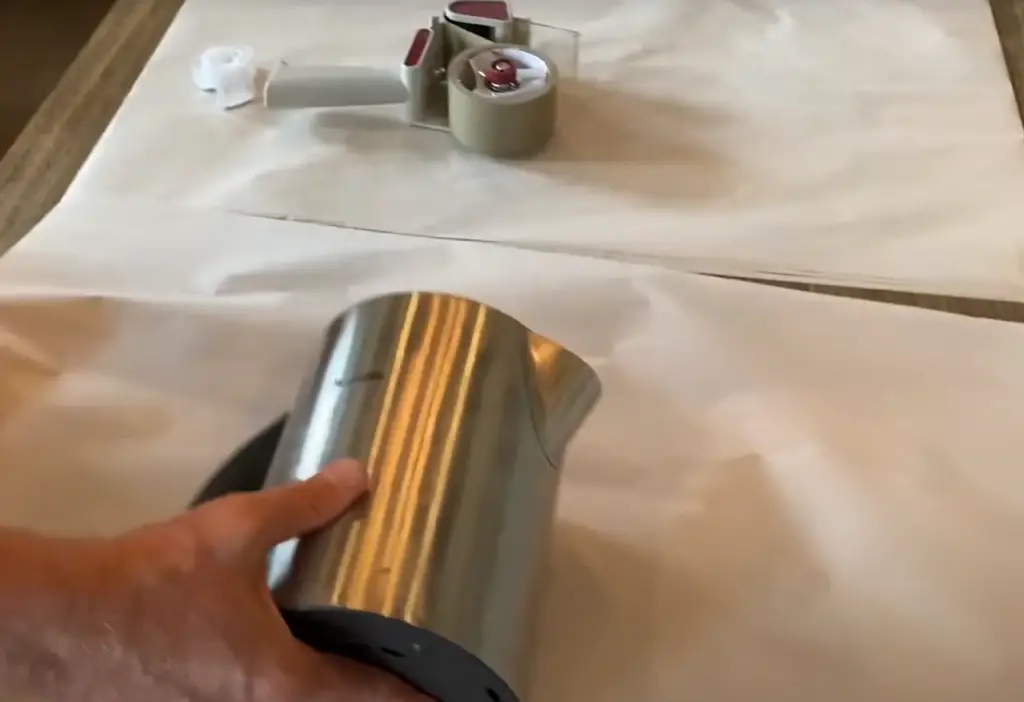
Common Tips for Secure Appliance and Furniture Moving
If you are going to move, you should take proper precautions to ensure the safety of your possessions. Here are some tips for safe appliance and furniture moving:
- Measure your furniture before moving day. Make sure that all entryways, staircases, and hallways are clear and large enough to fit the appliance or furniture pieces you’re planning on moving;
- Disassemble larger items if possible. This includes washing machines, dishwashers, refrigerators, stoves, ovens, microwaves, and other electrical appliances. This will make them easier to move and less prone to damage during transit. Make sure you keep all screws, bolts, and other hardware in a secure container for easy reassembly later on;
- Pack small items like plates, cups, and glasses in sturdy boxes with plenty of padding to prevent breakage during transit;
- Secure drawers on large pieces of furniture with tape or screws so they don’t open while being moved around during transport;
- Use furniture sliders or moving blankets to protect the floors while sliding appliances and furniture around;
- Rent a dolly if you’re unable to carry heavy items up and down stairs or through doorways. This will make it much easier on your back, as well as reduce the chances of damaging something during transit;
- Secure large items with straps when loading them onto the truck, so they don’t shift during transport and stay in place until you arrive at your destination;
- Make sure that you have enough help for all of the items being moved – multiple people are necessary for lifting large or heavy objects safely and properly to avoid injury or damage to property;
- Invest in insurance for expensive items like appliances, electronics, and furniture to protect them from any damage that may occur during transit;
- Label all of the boxes so you know what is inside them when unloading them at your new home. This will make it easier for your movers and save time when you’re unpacking;
FAQ
How should I arrange my kitchen appliances?
It is important to arrange your kitchen appliances in a way that makes them easily accessible and maximizes space. First, determine what appliances you need in your kitchen and where they will be located. Then, plan out the layout using measurements to make sure everything fits properly. Place heavier items on the bottom shelves or countertops to prevent tipping, while keeping frequently used items within easy reach. Finally, organize items by usage and store smaller appliances like toasters and coffee makers together with their accessories. This will help keep your kitchen tidy and efficient.
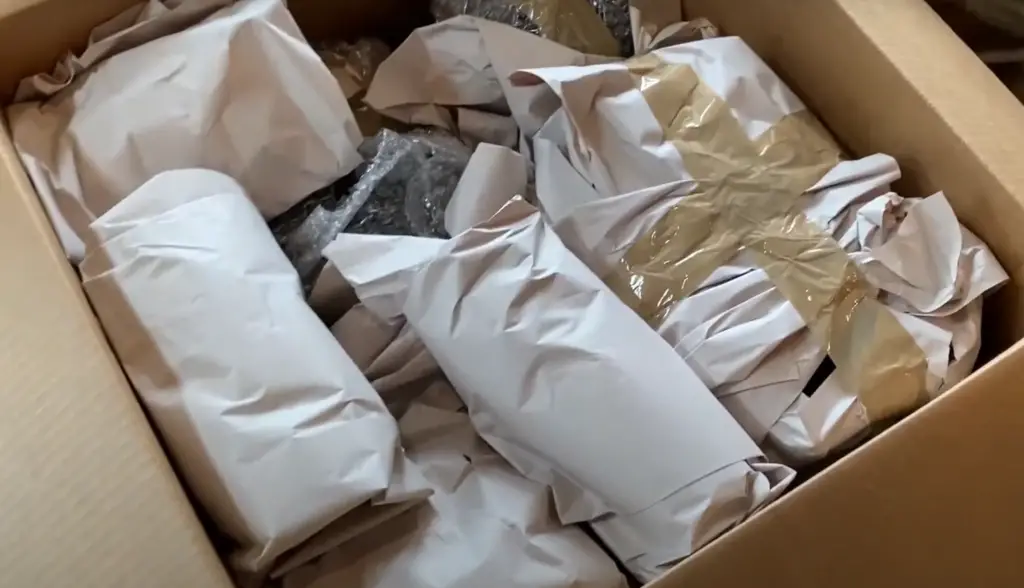
How do you pack kitchen utensils?
When packing kitchen utensils, it’s important to use the right materials and containers. First, choose a sturdy box or container that will fit everything you need to pack. Then, wrap fragile items such as glassware in bubble wrap or tissue paper before placing them in the box or container. Utensils like knives should be stored in a separate container for safety reasons. Finally, organize the items using dividers and cushioning material between them so they won’t move around during transport.
What not to pack in boxes when moving?
How to pack a refrigerator for moving?
When packing a refrigerator for a move, it is important to empty the fridge and clean it thoroughly. Take out all food items, shelves, drawers, and other accessories. Then disconnect the power cord and wrap it up in bubble wrap or newspaper. Next, use cardboard or foam padding to secure any loose parts inside the fridge. Finally, place the fridge in a large box lined with packing paper and tape it securely shut before moving it to your new home.

How to pack artwork for moving?
When packing artwork for a move, it is important to use the proper materials and supplies. First, wrap each piece of artwork in bubble wrap or tissue paper and then carefully place them into boxes or other containers. Make sure to fill any empty spaces with packing material such as newspaper or foam peanuts. Finally, label each box clearly with the content inside so you can easily find them when unpacking at your new home.
What kind of packing materials should I use?
Several types of packing materials can be used when preparing items for a move. The most common type is cardboard boxes, which come in various sizes and shapes. Bubble wrap and packing peanuts can be used to protect fragile items while Styrofoam boards are great for keeping artwork safe. Additionally, packing tape and stretch wrap can be useful for securing items during transport. Finally, labels are a great way to easily identify the contents of each box.
Useful Video: How to Pack Kitchen Appliances
Conclusion
If you are going to move, consider some common tips on how to make it easier. Do research on the area you’re moving to, budget for both your move and life in the new place, try to declutter before you move, and get help with packing if needed. Packing correctly is essential for keeping your items safe during the move and will help you unpack quicker once at your destination. To pack efficiently, make sure to label boxes and secure fragile items with bubble wrap or packing paper. This guide has hopefully provided some helpful tips to make your move easier and smoother.
References:
- https://www.moving.com/tips/how-to-pack-small-appliances/
- https://www.thespruce.com/packing-small-appliances-step-by-step-2436055





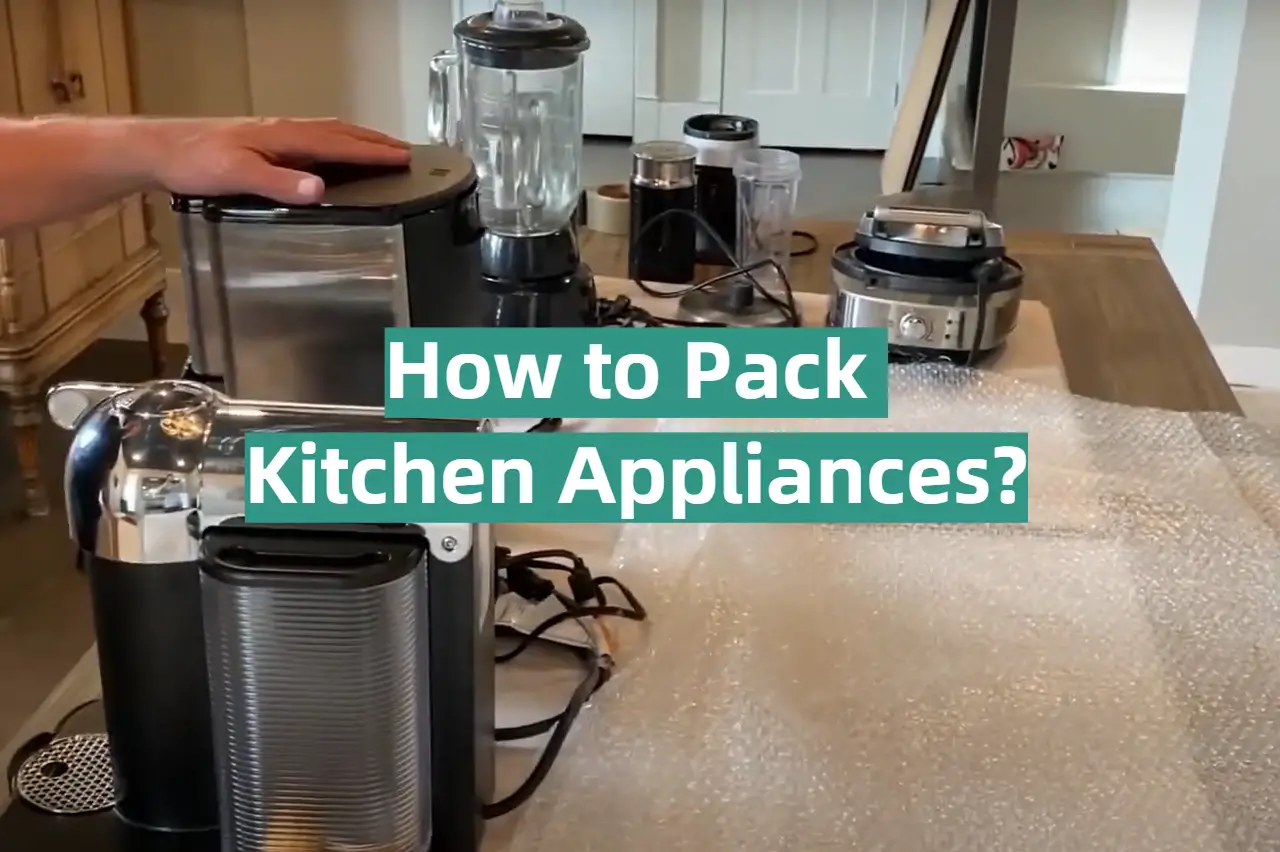




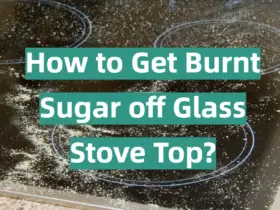

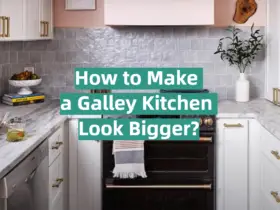
Leave a Reply